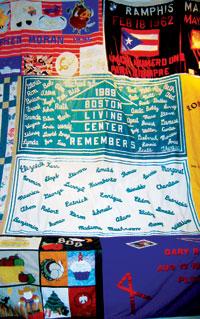Fossils, Meteorites, and Glass Flowers

September 25, 2006
New York City has their Museum of Natural History, Washington, DC has theirs as well, but did you know that we’ve got a Museum of Natural History right here in our own backyard? The Harvard Museum of Natural History, one of the many museums located on the Harvard campus just over the Charles in Cambridge is only a few T-stops away on the red line and a must see for anyone interested in the natural world.
The museum is made up of three main sets of galleries: the zoological, the mineralogical & geological and the botanical collection. Each collection and each turn around the next corner holds treasures to be found. Not only will you be amazed at the variety in the collections, but also the accuracy with which they are presented. Where else can one go to see a stuffed leopard, a glass cornflower, and a rough ruby all in one place? The Harvard Museum of Natural History, that’s where.
The zoological collection is where one finds examples of animals, both extinct and still thriving; from dinosaurs to birds and mammals. Here one finds countless stuffed birds, mammals, reptiles, fish, and insects from around the world. Here we find eagles standing majestically and tigers poised to strike; stuffed and preserved for all time. There are also a number of fossils to be found from invertebrates to the worlds only mounted Kronosaurus, a nearly 50 foot long marine reptile from the Early Cretaceous period. In this section one will also find stuffed peasants once owned by George Washington. With so many examples of wildlife you feel as if you’ve traveled the world and seen all that there is to see, and you haven’t even left the building.
The mineralogical and geological collection is where one will find examples of gemstones, polished and rough from around the world. The star of this collection is a 1600 pound amethyst geode from Brazil. This section also includes one of the largest and most exceptional collections of meteorites, a heavenly body that survives impact with the Earth, to be found anywhere. If it fell from the sky and landed here on earth chances are that you can find something like it here. For this is where shooting stars come to rest.
The most anticipated collection in the museum is the botanical collection. Here is where one will find the world famous Ware Collection of Blaschka Glass Models of Plants. Father and son, Leopold and Rudolph Blaschka, were skilled glass blowers who created these models between 1887 and 1936. More than 3,000 models of more than 830 species of plants can be found in this room. Commissioned to create lifelike examples of plants for use in botanical education, the Blaschka’s set out to create one of the most amazing and accurate collections of botanical examples in the world. The glass flowers are just as lifelike, maybe even more so in the case of those of us born without green thumbs, as any to be found growing in your garden. And, since they are made of glass, they are always in bloom.




























































